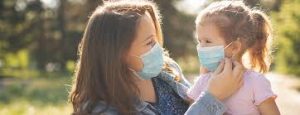
The COVID-19 pandemic has impacted every aspect of our lives, and one of the biggest concerns for parents and caregivers has been the health and safety of children. While children are less likely to experience severe illness from COVID-19 compared to adults, they are still at risk of contracting and spreading the virus. As a result, it’s crucial for parents to take steps to protect their children and reduce their exposure to COVID-19. Here are some essential tips on how to keep your children safe during the pandemic.
1. Practice Good Hygiene Habits
One of the most effective ways to prevent the spread of COVID-19 is through good hygiene practices. Teach your children the importance of washing their hands frequently with soap and water for at least 20 seconds, especially after coughing or sneezing, before eating, and after being in public places. If soap and water are not available, use a hand sanitizer with at least 60% alcohol.
Make sure your children understand that they should avoid touching their face, especially their eyes, nose, and mouth, as this can transfer germs from surfaces to their respiratory system. Encourage them to cover their mouth and nose with a tissue or their elbow when coughing or sneezing.
2. Encourage Mask-Wearing
While children under the age of two should not wear masks, it is important for older children to wear a mask when they are in public places, particularly where social distancing may not be possible. Wearing a mask helps reduce the risk of spreading respiratory droplets that may contain the virus, protecting both the child and others around them.
Teach your child how to wear a mask properly, covering both the nose and mouth, and explain why wearing a mask is important. Make mask-wearing a part of their routine, especially if they are going to school, daycare, or other public spaces. Ensure that the mask fits comfortably and is washed regularly.
3. Practice Social Distancing
Social distancing remains one of the most effective strategies for reducing the spread of COVID-19. Teach your child to maintain a safe distance (at least 6 feet) from others, particularly in crowded places. This includes avoiding physical contact like handshakes, hugs, and high-fives.
If your child is attending school or participating in social activities, encourage them to limit close interactions with others, especially in enclosed spaces. Remind them of the importance of keeping a safe distance, even when playing with friends.
4. Limit Exposure to Crowded Places
While it may be tempting to return to normal activities, it is important to limit exposure to crowded places, especially indoor spaces with poor ventilation. Whenever possible, opt for outdoor activities that allow for better airflow and social distancing.
If your child needs to attend school or daycare, make sure to stay informed about the school’s COVID-19 safety measures, such as mask mandates, classroom setups, and sanitation protocols. Keep in mind that keeping children away from crowded environments is still one of the most effective ways to reduce their risk of exposure.
5. Monitor Their Health and Watch for Symptoms
Although children are generally at lower risk of developing severe symptoms from COVID-19, they can still become infected. Be vigilant about monitoring your child’s health for any signs of illness, such as fever, cough, shortness of breath, or fatigue. If your child develops symptoms, contact your healthcare provider for guidance and follow local health protocols for testing and quarantine if necessary.
It’s also essential to stay updated on the latest health advice and guidelines related to COVID-19. This includes knowing what to do if your child is exposed to someone with COVID-19 and understanding the current quarantine and isolation recommendations.
6. Vaccination for Eligible Children
As COVID-19 vaccines become available for children, it is important to consider vaccinating your child if they are eligible. Vaccines have been shown to be highly effective in preventing severe illness, hospitalization, and death from COVID-19. Speak to your pediatrician or healthcare provider to get the most up-to-date information on COVID-19 vaccines for children.
The vaccine not only protects your child but also helps protect others in the community, contributing to the overall effort to control the spread of the virus.